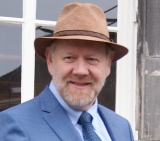|
Disciplinary competences is the Final of the Seven Competences of the Sustainably Competent Professional: it's the '+D' in RESFIA+D.
> For the numbered notes, such as (1), see below.
> Download RESFIA+D, including this page, as a set of spreadsheets in English, German or Dutch: see RESFIA+D: The introduction.
Disciplinary Competences: A sustainably competent professional has specific competences for sustainability, in line with their own education, profession and position.
![]() Example: The Educator developes and applies education that enables students to significantly contribute to sustainbable development.
Example: The Educator developes and applies education that enables students to significantly contribute to sustainbable development.
Level 3: Apply | Level 4: Integrate | Level 5: Improve | Level 6: Innovate |
D1. Innovate education, regarding structures, methods, and contents
> You introduce education contents (1) related to sustainable development (SD) into existing education. > You treat these contents not only as separate topics; rather, the complex relations between them are emphasized. | > You integrate existing pedagogic and didactic methods appropriate for active SD learning (2) into the education of you, and perhaps also of your colleagues, department or institute. > Through these methods, you stimulate learners to show an active learning attitude and a sense of responsibility of their own learning goals and processes. > You select methods such that relations with real life and professional practices are evident. | > You design and introduce new pedagogic and didactic methods appropriate for active SD learning. > For this purpose, you create new educational materials (3), and you ask and receive feedback on them from learners, colleagues and experts. | > You design new and innovative ways to realise education (4). > This relates to educational structures, and/or cultures, and/or regulations, and/or financing, and/or roles and tasks of educators, and/or use of equipment and space (5), or even to complete educational systems. > Doing this, you make explicit why and how these innovations contribute to sustainable development. |
D2. Offer challenging, learner-centred education within real-life contexts
> You apply a variety of pedagogic and didactic methods, enabling the learners to understand the basic notions of sustainable development. > You also stimulate learners to discover the relations between sustainable development and their own (present or future) profession. | > You guide learners to discover the relations between sustainable development and other topics in the curriculum, causing sustainable development to be a continuous thread or fundament throughout the curriculum. > Doing this, you enable the learners to act in a multidisciplinary (6) way. > You enable the learners to act within a real-life context, or at least within a realistic context. | > Feedback from learners, colleagues and experts is used to systematically improve the learning process and the role of the educator in it. > Topical developments (7) are constantly observed by you, and used to keep the learning process up to date. | > You cooperate with colleagues from different topics, and with external experts, in order to let the learners operate in an interdisciplinary or even transdisciplinary (6) context. > Doing this, you show leadership among your colleagues and al others who are involved in the learning process in an educating capacity. |
D3. Involve sustainable development in learner assessments
> You see to it that achievements by learners concerning sustainable development are assessed (8) in a proper way, appropriate to the pedagogical and didactic methods that are used. | > You see to it that the assessment relates not only to sustainable development as such, but also thoroughly investigates whether the learner applied the principles of sustainable development in all or most of the other topics in the curriculum. > In order to do so, you involve your colleagues for a balanced and complete assessment. | > Not only the capacities (9) of the learner concerning sustainable development are assessed by you, but also the way in which sustainable development is expressed in the actual behaviour and achievements of the learner as a (future) professional (10). > You apply internationally recognized standards to assess the behaviour and the achievements of the learners (11). | > New and innovative ways to assess the achievements and the behaviour of the learners are designed and introduced by you, based upon innovative ideas and concepts about what may be expected from true sustainably competent professionals. |
1. Either developed by yourself, or taken from external sources
2. Examples are: problem-based learning; project education; action research; internships; debates; campaigns; crowd-sourcing; serious games; mini-enterprises.
3. Such as: books; magazines; articles; computer applications; websites; databases; blogs & vlogs; games.
4. This may refer to formal, informal or non-formal education, or to combinations of them. Formal education may involve the development of a completely new study program, e.g. at the BSc or MSc level.
5. Equipment and space: this may refer to buildings, campuses, surrounding neighbourhoods and environments, IT equipment, laboratories, traffic items, paper, chemical substances, energy, water, etc.
6. ‘Multi-‘, ‘inter-‘ and ‘transdisciplinary ‘ are concepts defined in different ways by different authors. In this document, they are used as defined in Roorda (2010):
“In a multidisciplinary approach there is cooperation between various disciplines, keeping intact every separate set of theoretical
concepts and methodological approaches.
In an interdisciplinary approach there is cooperation between various disciplines, where a common methodological approach
and theoretical fundament is looked for, as a synthesis of the participating disciplines. Participants try to speak ‘one language’.
In a transdisciplinary approach, not only co-operation takes place between specialists of various disciplines, but also others are
directly involved: users, problem owners, clients, stakeholders, etc. (transdisciplinary = literally: beyond the disciplines).”
Another way of saying this is (Roorda, 2016):
“Monodisciplinary = one or more experts, one discipline.
Multidisciplinary = one expert [or learner], several disciplines.
Interdisciplinary = several experts in cooperation, each from his/her own discipline: the whole is more than the sum of its parts.
Transdisciplinary = interdisciplinary + stakeholders without some special expertise.”
7. Such as in: society; politics; finance and economy; science and technology; the natural environment; educational science.
8. The term ‘assessment’ applies here in a variety of ways, ranging from traditional exams to dissertations and reports, art products, questionnaires, websites, presentations, and all kinds of other achievements and results produced by the learners.
9. In terms of KISA: Knowledge, Insight, Skills and Attitude.
10. In the textbook Fundamentals of Sustainable Development (Roorda, 2025: 4th edition), chapter 12 offers a ‘checklist’ for sustainability requirements of behaviour and achievements by learners and professionals. The table was derived from the RESFIA+D model.
11. RESFIA+D is an example of such a standard.

